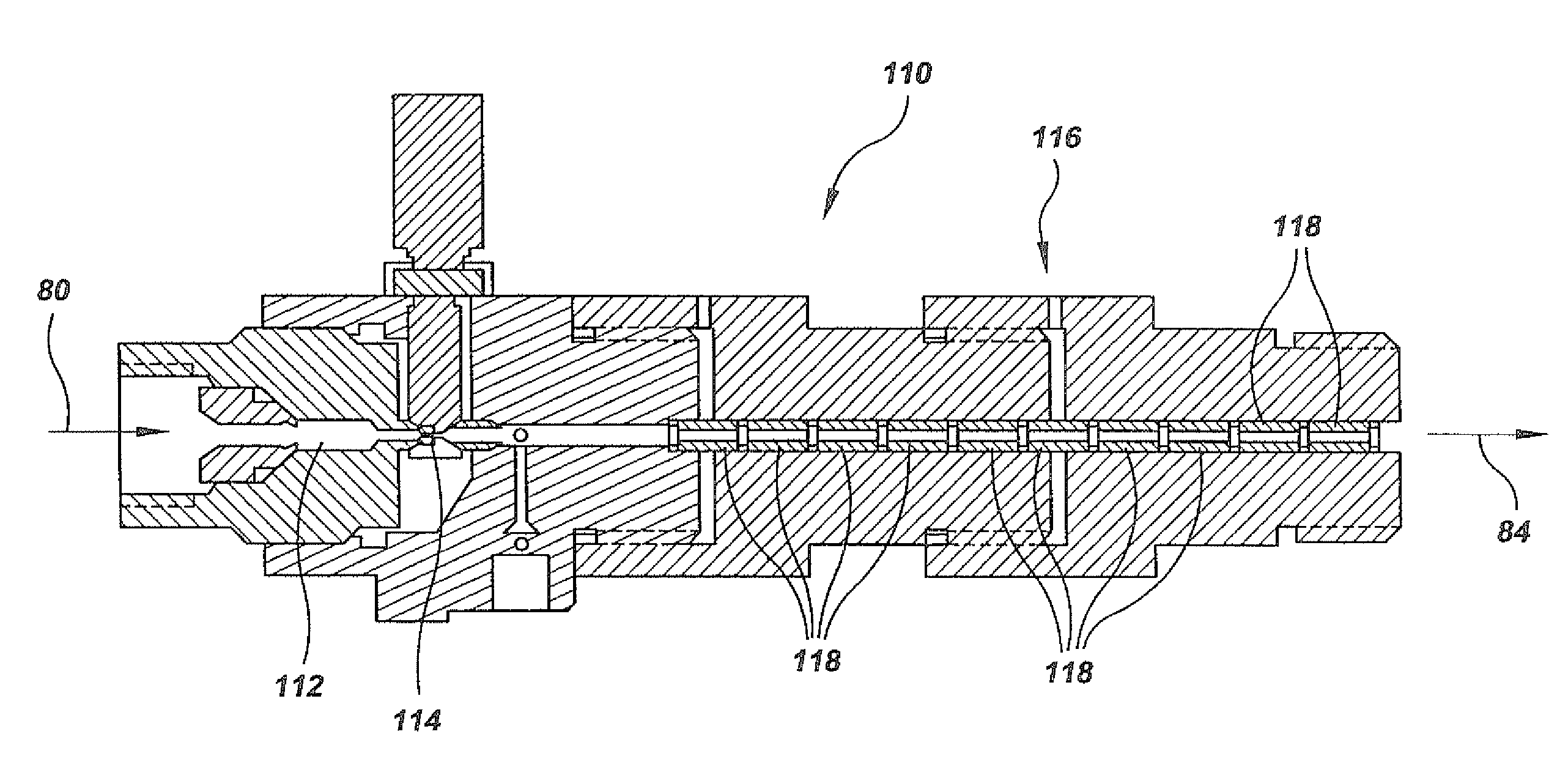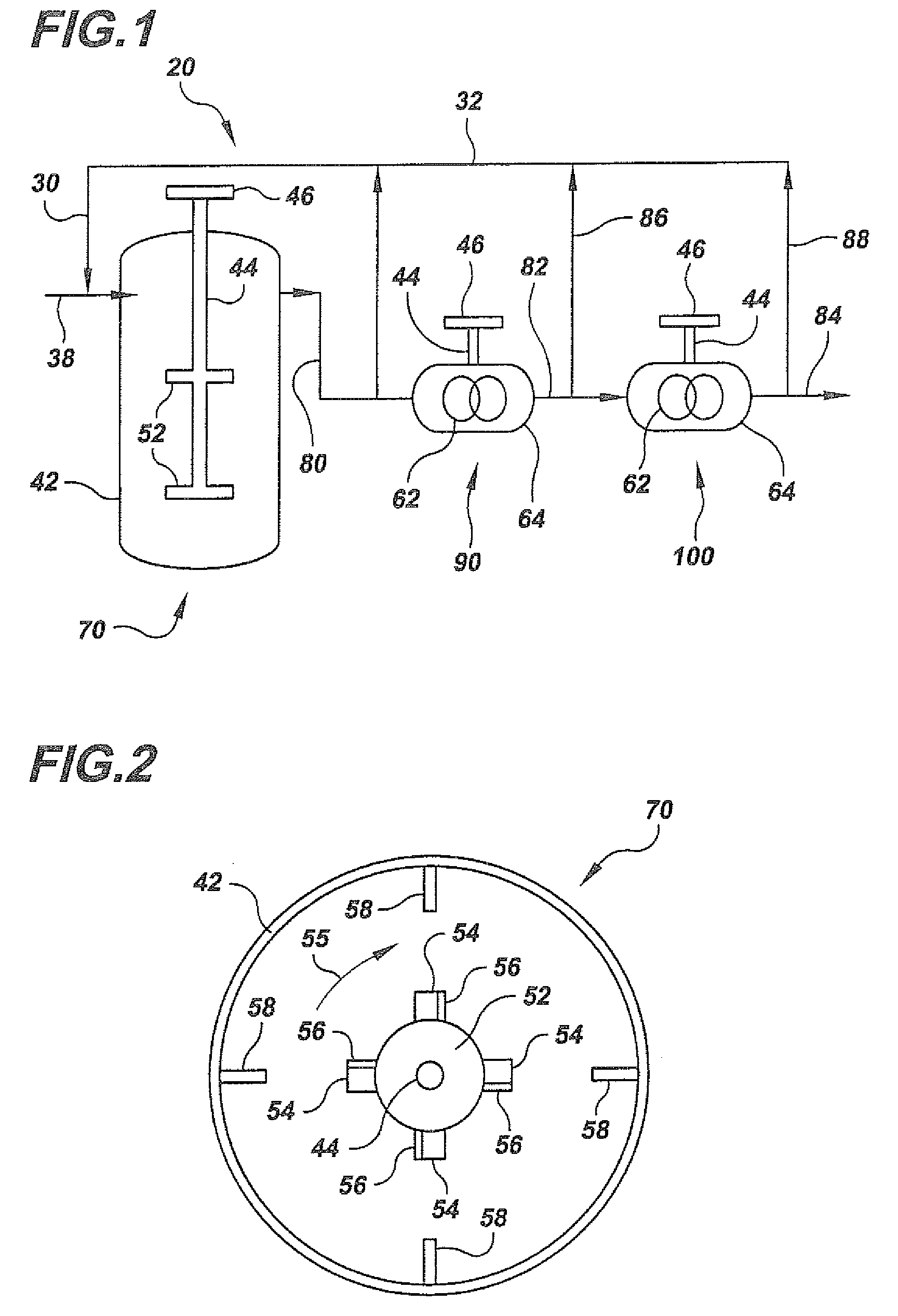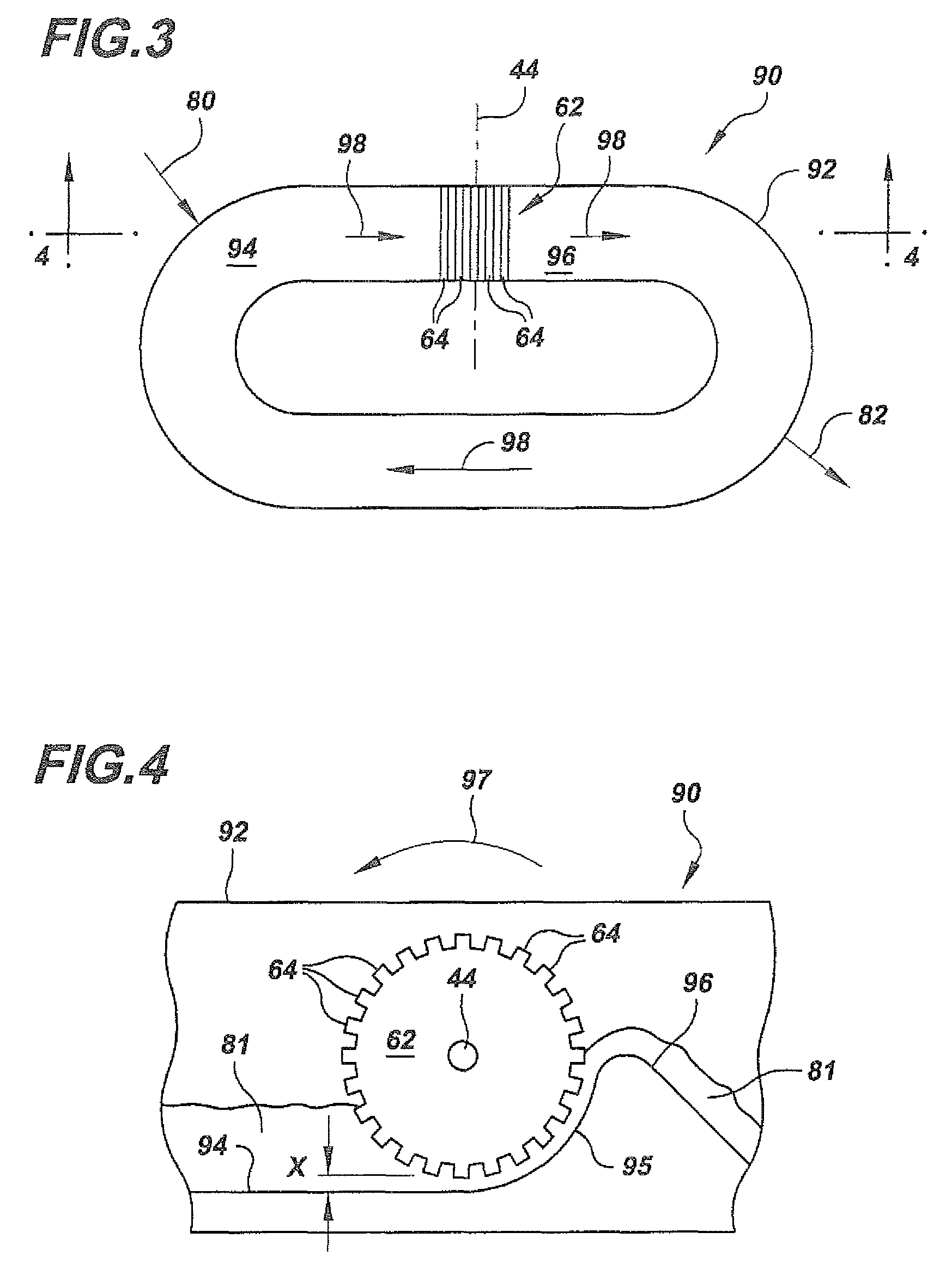Process for producing nanofibers
a nanofiber and nanotechnology, applied in the field of fiber production, can solve the problems that prior art methods and equipment have not proved effective for such purposes, and achieve the effects of improving character, energy efficient and productive, and facilitating production
- Summary
- Abstract
- Description
- Claims
- Application Information
AI Technical Summary
Benefits of technology
Problems solved by technology
Method used
Image
Examples
example 1
[0052]A slurry of fibrillated fibers with CSF 0 is fed into a closed channel low shear refiner of the type shown in FIGS. 3 and 4. The fibrillated fiber slurry has a concentration of about 1.5% solids content by weight. At a rotor speed of about 500 rev. / min., the fibrillated fiber slurry is processed for a minimum of 30 to 45 minutes. After the nanofibers have been detached from the fiber cores, and the cores have been partially chopped into nanofibers, the slurry is fed into a closed channel high shear refiner of the type shown in FIGS. 5 and 6. At this stage the unprocessed original fiber cores are refined to generate more nanofibers. At a rotor speed of about 3600 rev. / min. the fiber slurry is processed for a minimum of 1 hour. The resulting slurry contains nanofibers with a diameter in the range of about 50 to 500 nm and a fiber length of about 0.5 to 3 mm.
example 2
[0053]A fibrillated fiber slurry of about 0.5 wt. % solids content and CSF of 0 is fed into the inlet chamber of a homogenizer of the type shown in FIG. 7. The nanofibers at this stage are primarily still connected to the core fiber. The feed rate is kept at 1 liter / min (2 lbs. / hr of dry fiber). The pressurized cell at 20,000 psi (140 MPa) forces the fiber slurry through the nozzle. The nozzle diameter is kept at 0.2 millimeters. The fiber slurry enters the reactors of the absorption cell, which are used to absorb the kinetic energy. The resulting slurry is collected at the end of absorption cell. The slurry is then fed back into the inlet chamber for reprocessing, in about 7 passes, until substantially all the nanofibers are separated and core fibers are converted into nanofibers.
[0054]Thus, the present invention provides an improved process and system for producing nanometer-sized fibers having substantially no larger fiber cores mixed therein with greater uniformity and flowabili...
PUM
| Property | Measurement | Unit |
|---|---|---|
| diameter | aaaaa | aaaaa |
| diameter | aaaaa | aaaaa |
| aspect ratio | aaaaa | aaaaa |
Abstract
Description
Claims
Application Information
 Login to View More
Login to View More - R&D
- Intellectual Property
- Life Sciences
- Materials
- Tech Scout
- Unparalleled Data Quality
- Higher Quality Content
- 60% Fewer Hallucinations
Browse by: Latest US Patents, China's latest patents, Technical Efficacy Thesaurus, Application Domain, Technology Topic, Popular Technical Reports.
© 2025 PatSnap. All rights reserved.Legal|Privacy policy|Modern Slavery Act Transparency Statement|Sitemap|About US| Contact US: help@patsnap.com



